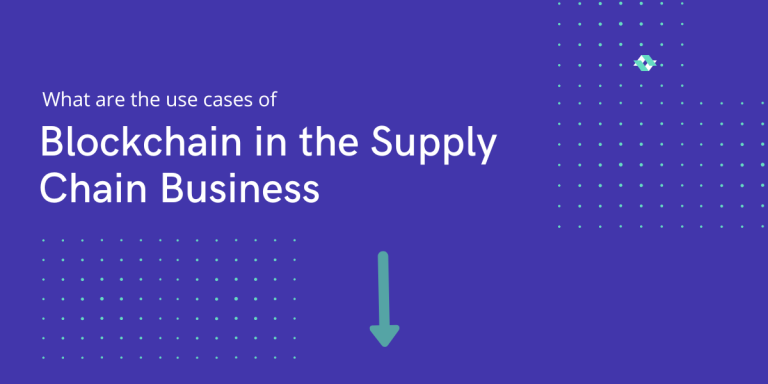Blockchain is a distributed database that allows for secure, transparent and tamper-proof record-keeping. This makes it an ideal tool for managing supply chains, as it can provide visibility into the entire process and ensure that all parties involved are held accountable.
But how can you use blockchain in the supply chain business? In this article, let’s take a look at how you
What is Supply Chain and Why Should You Care?
Supply chains are the networks of companies and individuals that bring goods and services to market. They are made up of many parts: suppliers, manufacturers, distributors, retailers and consumers.
Supply chains have three main functions:
- create value by providing products to market
- reduce waste through the efficient use of resources
- minimize risk through the effective management of supply chain processes
How Does Blockchain Work?
Blockchain works by creating a shared digital ledger of all transactions that have taken place. This ledger is distributed across a network of computers, making it virtually impossible to tamper with. Each transaction is verified and recorded by all parties involved, and once it is added to the blockchain it cannot be changed or removed.
Please note that Blockchain is not cryptocurrency. Here’s an article comparing blockchain vs cryptocurrency to help you get a clear picture.
Benefits of Using Blockchain in the Supply Chain Businesses
Blockchain can provide a number of benefits to the supply chain, including improved transparency, traceability, and efficiency.
1. Improved Transparency
Blockchain can help to increase transparency throughout the supply chain by providing a shared record of all transactions. This would allow all parties involved to see where goods are at every stage of the process and could help to reduce fraud and corruption.
2. Better Traceability
Blockchain can also help to improve traceability by providing a complete history of all transactions. This would allow businesses to track their products from start to finish and would help to ensure that only safe and compliant products are being shipped.
3. Increased Efficiency
Blockchain can also help to improve efficiency by automating many of the processes involved in the supply chain. For example, smart contracts could be used to automatically release payments once goods have been delivered. This would help to reduce the need for manual processing and could help to speed up the overall supply chain.
Where Can Blockchain Be Used in Supply Chains?
There are a number of ways that blockchain can be used in the supply chain, including:
1. Tracking the Movement of Goods
Blockchain can be used in the supply chain to track the movement of goods. This is because blockchain provides a secure and immutable record of all transactions that take place on the network. This means that each time a good is moved, the details of that transaction can be recorded on the blockchain. This information can then be used to track the movement of goods throughout the supply chain.
2. Validating the Quality of Goods
Blockchain can help to validate the quality of goods. This is because blockchain can be used to store data about the quality of goods at each stage of the supply chain. This data can then be used to ensure that only goods of a certain quality are delivered to the end customer. This could help to improve the overall quality of the goods that are delivered to customers.
3. Automating the Release of Payments
Blockchain can automate the release of payments. This is because blockchain can be used to create smart contracts. These smart contracts can be used to automatically release payments when certain conditions are met. For example, a smart contract could be used to release a payment when a good is delivered to the customer. This would help to streamline the payment process and reduce the risk of delays in payments.
4. Managing Supplier Contracts
Businesses can use blockchain to manage supplier contracts. This is because blockchain can be used to store data about supplier contracts. This data can then be used to track the performance of suppliers and ensure that they are meeting their contractual obligations. This could help to improve the overall quality of the goods that are delivered to customers.
5. Tracking Provenance
Blockchain can help track provenance. This is because blockchain can be used to store data about the history of a good. This data can then be used to track the provenance of a good throughout the supply chain. This could help to ensure that only goods of a certain quality are delivered to the end customer.
The Challenges of Using Blockchain in the Supply Chain
Despite the many benefits of blockchain, there are also a number of challenges that need to be addressed. These include:
Limited Scalability
One of the main challenges of implementing blockchain in the supply chain is its limited scalability. The current blockchain technology is not able to handle a large number of transactions at the same time, which can slow down the supply chain and create bottlenecks.
High Costs
Another challenge of implementing blockchain in the supply chain is the high costs associated with it. The costs include the costs of setting up the infrastructure, maintaining it, and also the costs of transaction fees.
Lack of Standardization
When implementing blockchain, there’s a concern about the lack of standardization. There is no single standard for the format of data or for the way transactions are processed. This can lead to confusion and errors.
Risk of Fraud
One of the risks associated with implementing blockchain in the supply chain is the risk of fraud. The decentralized nature of blockchain makes it difficult to track and trace transactions, which makes it easy for criminals to commit fraud.
Regulatory Uncertainty
Finally, there’s regulatory uncertainty. The lack of clarity around the regulatory framework for blockchain technology can make it difficult for businesses to comply with the regulations.
Conclusion
Blockchain has the potential to transform the supply chain by making it more efficient and transparent. By using blockchain, companies can track their products from the moment they are created to the moment they are delivered to the customer. This would allow companies to identify and track any issues with their products, and make necessary changes to improve the efficiency of their supply chain.
In addition, blockchain can be used to create smart contracts. These are contracts that can be automatically executed when certain conditions are met. For example, a smart contract could be used to release payment to a supplier only when the products have been delivered. This would help to reduce the risk of fraud and corruption in the supply chain.
Overall, blockchain has the potential to transform the supply chain by making it more efficient, transparent, and secure.





